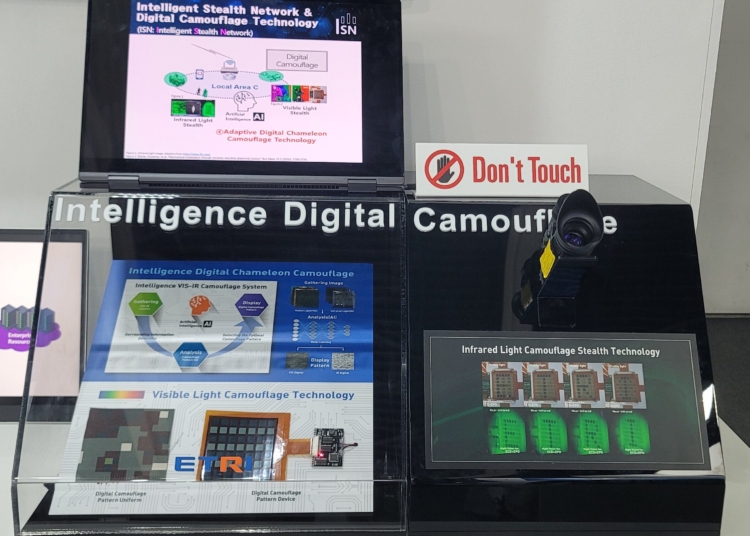In this article, we explore the latest developments in the world of stealth technology. From the origins of stealth technology in World War II to the present day, significant advancements have been made in enhancing camouflage and stealth capabilities. Advanced materials, such as radar-absorbent coatings, have revolutionized stealth capabilities by effectively absorbing or deflecting radar waves. Infrared camouflage has also become a priority, with the development of IR-reflective materials that reduce the heat signature of military assets. Additionally, active camouflage and shape-shifting stealth vehicles are emerging technologies that hold immense potential for enhancing stealth capabilities. While challenges remain, the future of stealth technology looks bright, with continued research and innovation driving further advancements.
Introduction
The world of military technology is constantly evolving, with new advancements being made in various fields. One of the most intriguing areas is stealth technology, which focuses on enhancing camouflage and stealth capabilities. In this article, we will explore the latest developments in this field, highlighting the incredible capabilities that have been unveiled recently.
Background
Stealth technology has a long history, with its origins dating back to World War II when radar-based detection systems were first introduced. However, it wasn’t until the 1980s that significant advancements were made, leading to the creation of stealth aircraft like the F-117 Nighthawk. Since then, researchers and engineers have been tirelessly working to improve stealth capabilities, both in the air and on the ground.
The Advent of Advanced Materials
In recent years, the development of advanced materials has revolutionized stealth capabilities. These materials have properties that can effectively absorb or deflect radar waves, making the object nearly invisible to detection systems. One such material is the radar-absorbent coating (RAC), which is capable of absorbing up to 99.9% of radar signals. By applying this coating to aircraft or ground vehicles, they can significantly reduce their radar cross-section, making them extremely difficult to detect.
The Importance of Infrared Camouflage
While radar stealth is crucial, infrared (IR) camouflage has also become a priority for military strategists. Traditional camouflage patterns may be effective against human detection, but they fail to mask the thermal signatures emitted by vehicles or aircraft. To tackle this issue, researchers have developed IR-reflective materials that can effectively reduce the heat signature of military assets. By reflecting the surrounding environment’s thermal energy, stealth vehicles become less visible to infrared detection systems, providing a comprehensive stealth package.
Unlocking the Potential of Active Camouflage
Active camouflage, once thought to be a concept exclusive to science fiction, is now becoming a reality. Researchers have made remarkable progress in creating materials that can adapt their appearance to match the surroundings actively. This technology utilizes cameras and sensors to capture the surrounding environment and then project the corresponding imagery onto the surface of the asset, effectively making it invisible. While still in its early stages, this development holds immense potential for enhancing stealth capabilities both on the ground and in the air.
The Rise of Shape-Shifting Stealth Vehicles
In addition to advanced materials and active camouflage, shape-shifting stealth vehicles are another exciting development in this field. Researchers are exploring the use of flexible materials that can change their shape, allowing military assets to adapt to different environments. For example, an aircraft capable of morphing its wings can reduce its radar cross-section by entering a more stealthy configuration during flight. This technology not only enhances stealth capabilities but also increases the versatility of military assets in various operational scenarios.
Challenges and Future Prospects
While significant progress has been made, there are still challenges to overcome in the realm of stealth technology. One of the primary concerns is the durability and maintenance of advanced materials used in stealth applications. These materials often require special attention and care to maintain their stealth capabilities, which can add complexity and cost to maintenance operations.
Looking ahead, the future of stealth technology appears bright. Continued research and innovation will likely lead to further advancements in material science, active camouflage, and shape-shifting technologies. As technology continues to evolve, stealth capabilities will increasingly play a significant role in modern warfare, providing military forces with a critical advantage on the battlefield.
Conclusion
Stealth technology has come a long way since its early days, and recent developments have ushered in a new era of camouflage and stealth capabilities. With the advent of advanced materials, active camouflage, and shape-shifting technologies, military assets are becoming increasingly difficult to detect, both by radar and infrared systems. As the field continues to evolve, the possibilities for stealth capabilities in the future are truly thrilling.












